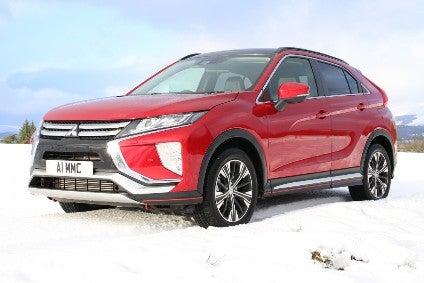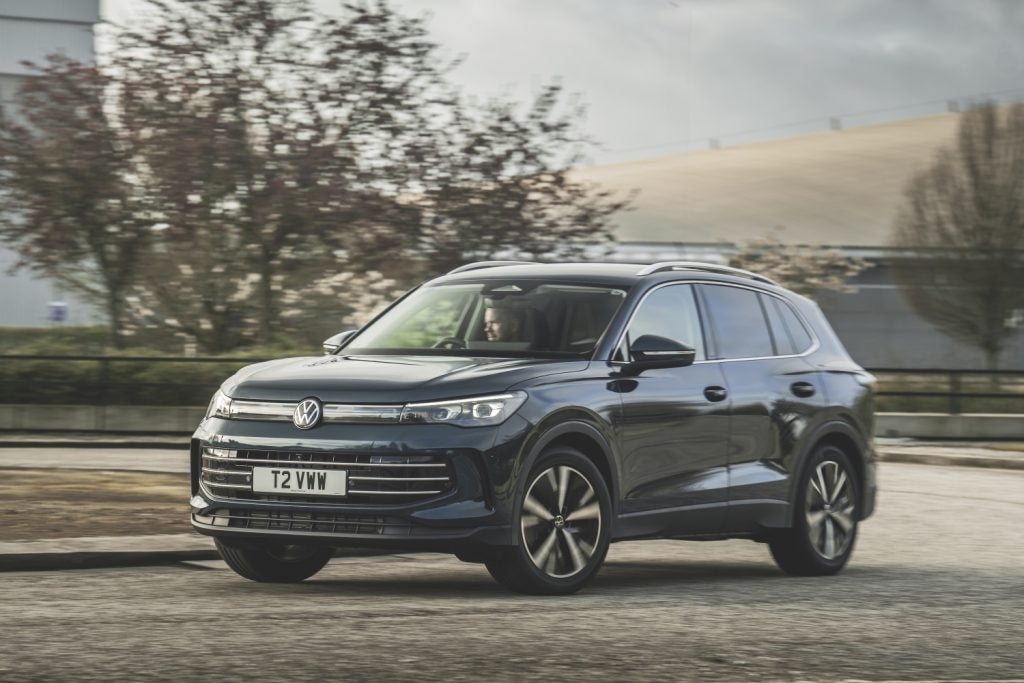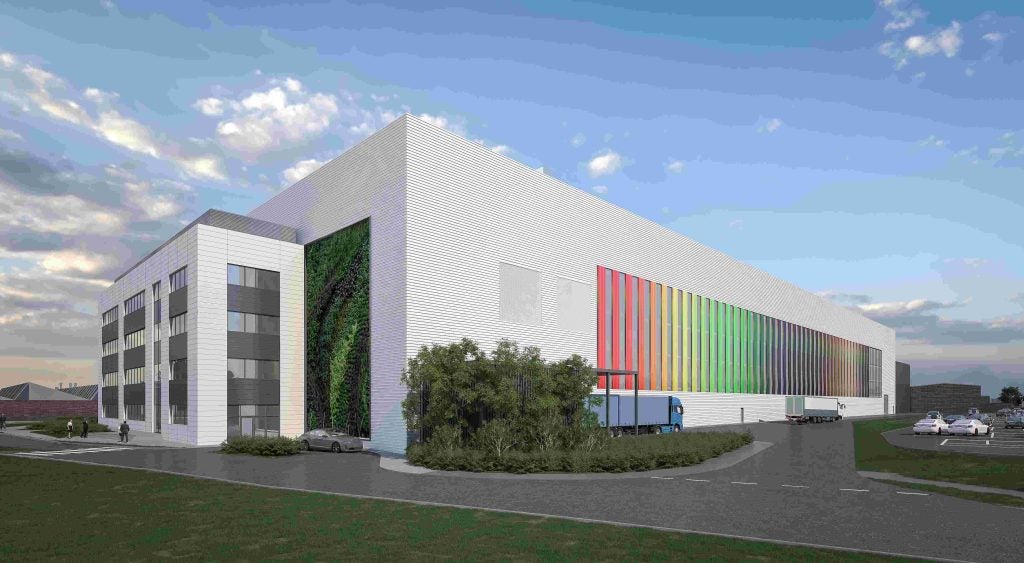
The Colt Car Company, which imports Mitsubishi vehicles to the UK, sees around 6,500 sales this year for the new Eclipse Cross but admits this is a conservative estimate. As the worldwide launch schedule for this new SUV accelerates, it could yet become a global best seller for Mitsubishi Motors.
The year is off to a very good start indeed for MMC. Profits are up, as are sales in many markets. Russia, which was once a country where the tri-diamond logo brand outsold some of the world’s largest OEMs, became a disaster area. Now, Mitsubishi is roaring back. In January, registrations doubled.
In the US, it’s also a good story, with January deliveries up over 2016 in a declining market, and the Eclipse Cross due to arrive there in March. Japan, where the new model has been available since late last year, is another country where Mitsubishi is making a strong comeback, its sales rising by 13.4 per cent in January to 7,720 vehicles, against a market which fell by 0.5 per cent.
ACEA is yet to announce Europe-wide numbers for last month, so for now, we only have December and CY2017 figures. These weren’t great, however, the brand seeing a worrying 20.5 per cent fall for the final month of the year and an annual total down by 2.5 per cent to 114,182 units. That gave Mitsubishi market share of 0.7 per cent.
Even though the UK market dipped in January, Mitsubishi delivered 17 per cent more vehicles.
Even though UK car sales dipped in January, Mitsubishi dealers fared well, delivering 17 per cent more vehicles than they did for the same month in 2017. That meant a 0.95 per cent share of the market, which is around the same level as Fiat, which suffered a disastrous collapse (down 47 per cent).
One of the reasons why the Japanese brand is doing so well is the decision it took some years back to invest in SUVs. Which is where the Eclipse Cross comes in.
How well do you really know your competitors?
Access the most comprehensive Company Profiles on the market, powered by GlobalData. Save hours of research. Gain competitive edge.

Thank you!
Your download email will arrive shortly
Not ready to buy yet? Download a free sample
We are confident about the unique quality of our Company Profiles. However, we want you to make the most beneficial decision for your business, so we offer a free sample that you can download by submitting the below form
By GlobalDataThis 4,405mm long model is an addition to the line-up, squeezing in above the ASX (RVR or Outlander Sport in some countries) and below the Outlander. That will probably mean a smaller footprint for the next ASX and a stretch for the Outlander generation four. These should arrive in about 18 to 30 months’ time respectively. Unlike the Eclipse Cross, they should have Renault-Nissan Alliance CMF platforms.
Unusually for a new Mitsubishi SUV, the Eclipse Cross isn’t (yet) available as a plug-in hybrid. Its general outline was previewed by the eX, a plug-in crossover concept first seen at October 2015’s Tokyo motor show. The world premiere of the production model took place at last year’s Geneva motor show.
The only engine is a new 1,499cc (‘4B40’) four-cylinder petrol turbo with outputs of 120kW and 250Nm. Even though Nissan and MMC have had various JVs from some years, this powertrain is not sourced from the Renault-Nissan Alliance, instead being one of the company’s own designs. Transmission choice is between a six-speed manual or a Jatco CVT with eight pre-programmed steps. All-wheel drive can only be ordered with the CVT.
The UK importer says a diesel engine is being developed and could be a possibility for this market “in six or seven months’ time”. That according to Toby Marshall, who heads up Sales & Marketing and presented an overview of the model at the media launch. Curious, I flipped open the fuel filler cover. Of a blanked off AdBlue slot there is no sign, although certainly there is room to add one next to where the petrol goes in.
At the moment, all production takes place at Okazaki in Japan.
China’s GAC Mitsubishi Motors joint venture will manufacture the model at one of its plants from 2019.
MMC’s Chinese partner has in recent days stated that the GAC Mitsubishi Motors (GMMC) joint venture will manufacture the model at one of its plants from 2019. This will most likely be in Guangzhou, where GMMC is based.
The Chinese JV is doing especially well, with sales surging by 96 per cent in January, to 15,682 locally built vehicles, which was a monthly record. That follows a 93 per cent growth spurt in 2017, to 121,133 cars and SUVs. The sales target for CY2018 is in excess of 200,000 units, which GMMC believes the addition of the Eclipse Cross will help greatly with.
Even though Mitsubishi has a job to do to lift its share of the global C-SUV segment, the new entry is more than up to the task. That starts with how the model looks.
What the company calls a ‘dynamic shield visual identity’ features on the front end. One of its elements is a silver C-shaped motif plus its reflection below each headlight and either side of the registration plate. This can also be seen on other models such as the Pajero Sport/Montero Sport, which will incidentally soon be offered in Britain wearing Shogun Sport badging.
The bold appearance might be restricted to the outside of the vehicle but on the inside, things look (and feel) very good too. A Mazda-style screen juts out of the top of the dashboard’s centre and the driving position is cosier than on some models in this size class. Aside from the height of the seating, it’s all very car-like. Shiny seating materials and brittle-feeling plastics are nowhere to be seen, nor is the glitzy aftermarket-looking sound system that you usually find in the brand’s vehicles.
Something which not every rival offers is a head-up display. Standard on model grades 3 and 4 (there is no 1: entry level is called 2), it shows – in colour – not only speed but adaptive cruise control, forward collision mitigation, adjustable speed limitation, lane departure warning, cruise control, shift indicator, seat belt reminder and door ajar indicator.
Mitsubishi engineers based this model on the same architecture as that of the Outlander.
Mitsubishi engineers based this model on the same architecture as that of the Outlander although there have been many changes, mainly to improve NVH. The all-wheel drive and braking system is called S-AWC (Super All-Wheel Control) and is bespoke to the new model, channelling the optimum level of torque to the rear axle as required.
Having sampled both manual and automatic cars on the media launch, for once I am going to say that the CVT is the better choice. Not only does it sound and feel as if there really are eight ratios, but there is not even a hint of the dreaded ‘rubber band effect’.
The CVT is faster to 62mph (9.3 seconds versus 10.3) and returns an official average of 42.2mpg (Combined) which is just 0.6mpg worse than the six-speed manual. These numbers are for front-wheel drive variants.
Only two versions of the six-variant line-up in the UK have 4WD, although that excludes the limited series ‘First Edition’, which can be ordered either in manual FWD form (GBP26,825) or as an automatic with all-wheel drive (GBP29,750). Once these cars are sold out, the highest price for an Eclipse Cross will be GBP27,900, which buys an auto-4WD in ‘4’ trim.







